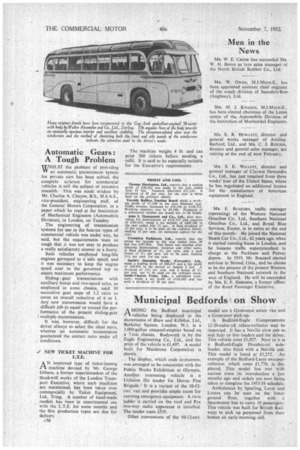Automatic Gears: A Tough Problem
Page 32

If you've noticed an error in this article please click here to report it so we can fix it.
WHILST the problem of providing vv an automatic transmission system for private cars has been solved, the complete solution for commercial vehicles is still the subject of intensive research. This was made evident by Mr. Charles A. Chayne, B.S., M.S.A.E., vice-president, engineering staff, of the General Motors Corporation, in a paper which he read at the Institution of Mechanical Engineers (Automobile Division), in London, on Tuesday.
The engineering of transmission systems for use in the heavier types of commercial vehicle was under way, he said, but the requirements were so tough that it was not easy to produce a really satisfactory answer in a hurry.
Such vehicles employed long-life engines governed to a safe speed, and ii was necessary to keep the engine speed near to the governed top to assure maximum performance.
Sliding gear transmissions with auxiliary boxes and two-speed axles, as employed in some chassis, used 10 successive gear steps of 1.2 ratio to cover an overall reduction of b i0 1. Any new transmission would have a difficult job to equal or exceed the performance of the present sliding-gear multiple transmissions.
It was, however, difficult for the driver always to select the ideal ratio, whereas an automatic transmission guaranteed the correct ratio under all conditions.




























































































